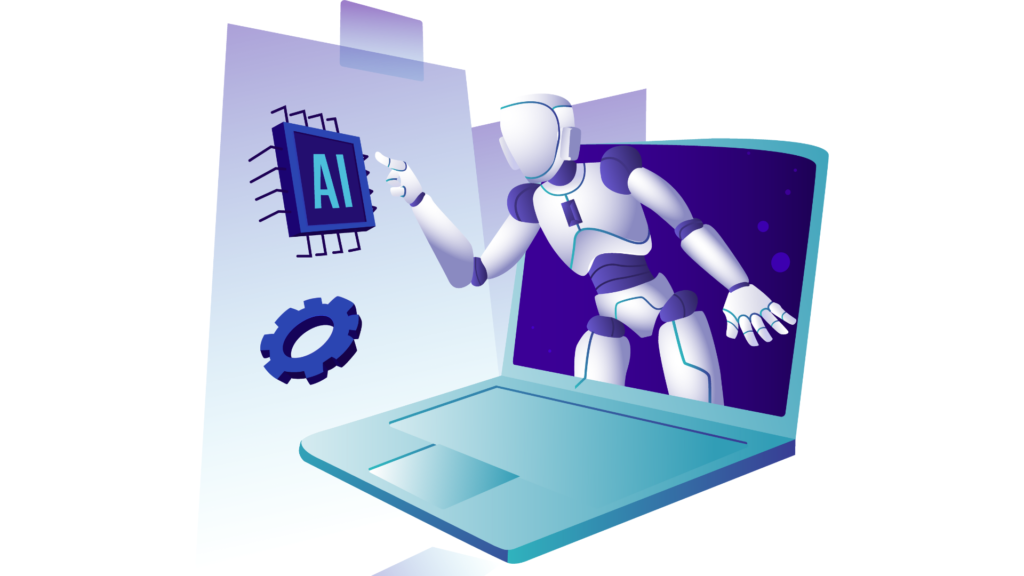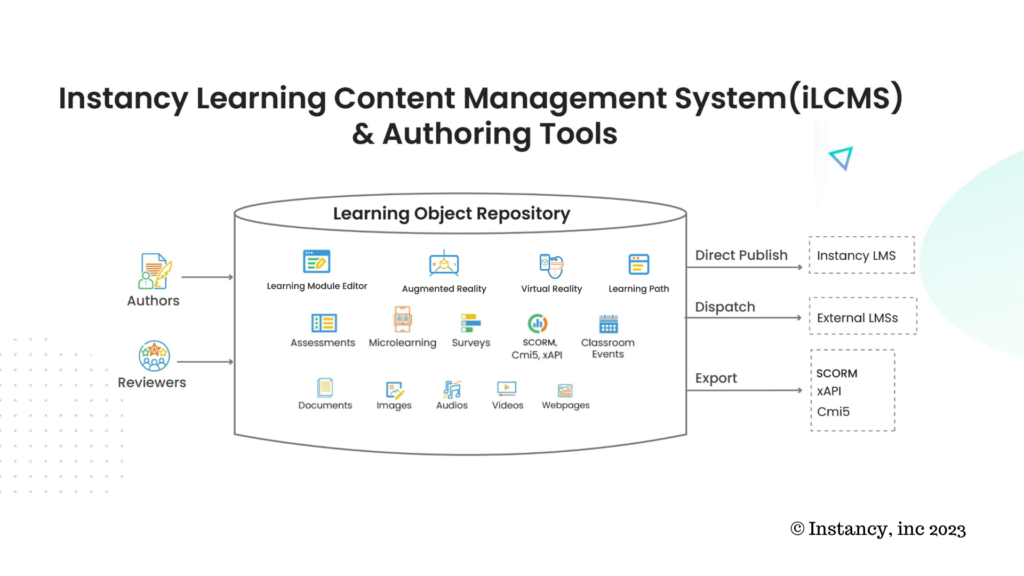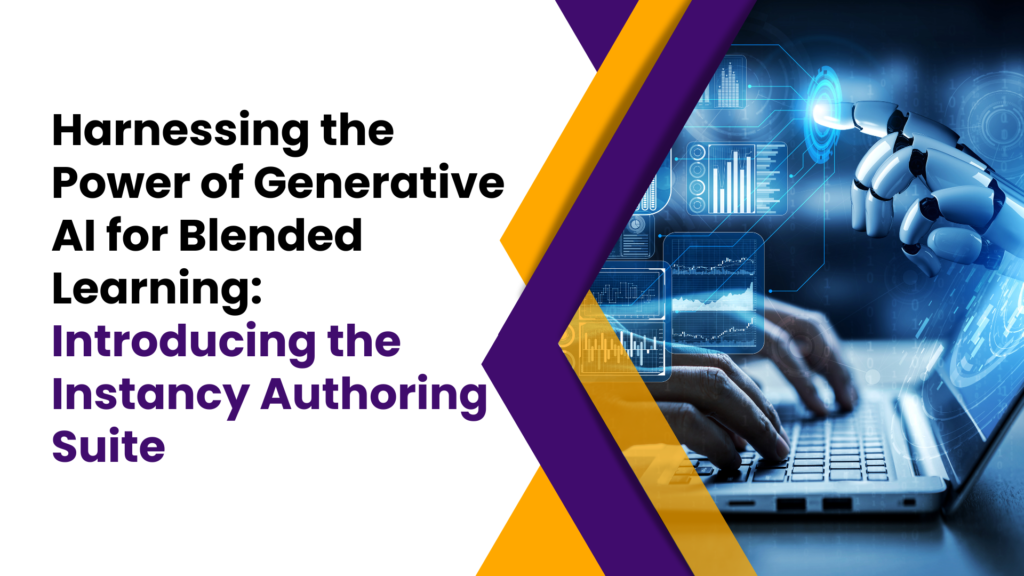In the rapidly evolving world of education, eLearning has emerged as a critical component, driving transformation in teaching and learning processes. Blended learning, a method that combines the strength of traditional classroom teaching with the flexibility of online learning, has shown promising results in enhancing learner engagement and outcomes. This approach accommodates different learning styles by delivering a variety of content types, making education more personalized and accessible.
With the advent of Artificial Intelligence (AI), particularly Generative AI, the landscape of eLearning content creation is undergoing significant changes. Generative AI, with its capability to generate new content that matches the learning objectives, is acting as a powerful ally for learning designers. In this context, the Instancy Authoring Suite comes forth as a comprehensive toolset powered by Generative AI, designed to create a wide array of content for blended learning. This suite revolutionizes eLearning content creation, making it more efficient, engaging, and learner centric.
Learning Object Repository
In the world of eLearning, the Learning Object Repository (LoR) plays a crucial role. It is a digital library where all types of learning materials and resources, including text, images, videos, quizzes, and multimedia presentations, are stored and managed. An LoR allows for efficient content reuse, eliminating the need to recreate content that already exists. This means that learning objects can be shared across different courses or programs, significantly reducing development time and promoting consistency.
Integrating Generative AI in Content Development

Generative AI, based on advanced machine learning models, is revolutionizing the content development sphere in eLearning. It functions as an artificial creative companion for learning designers, capable of generating diverse types of multimedia content, spanning from textual content to graphics and interactive elements. Even video transcriptions are within the reach of its proficiency, enabling a comprehensive conversion of data formats.
Generative AI is developed using large language models pre-trained on an immense volume of content derived from various public data sources. This pre-training allows the AI to understand context, syntax, and semantics, thereby generating content that is coherent and contextually relevant.
While the public data sources provide a general understanding of languages and contexts, Generative AI can also utilize private sources of content that learning organizations already possess. This means that the AI can be further trained on specific topics, styles, or terminologies unique to the organization or industry, resulting in content that aligns with the organization’s specific needs and standards.
In addition, Generative AI is multilingual, with the capacity to translate content into numerous languages. This makes learning materials globally accessible, promoting inclusivity in the learning process.
The advanced capabilities of Generative AI help to significantly reduce the time and effort involved in content creation. By taking over the routine tasks, it provides designers with more room for creativity and innovation. As a result, the content creation process becomes faster, more efficient, and highly personalized, catering to diverse learner needs and preferences.
In essence, the integration of Generative AI in eLearning content development is a game-changing move. It not only streamlines the process but also enriches the quality of content, ensuring a seamless, efficient, and engaging learning experience for all.
Support for eLearning Standards
The authoring tool suite comes with built-in support for eLearning standards like SCORM (Shareable Content Object Reference Model), xAPI (Experience API), and CMI5. These standards enable interoperability between different online learning technologies, ensuring that learning content can be shared and reused across different platforms.
Content Delivery

The suite ensures that the content is readily available on various platforms, including web, mobile, and chatbots. This multi-platform approach ensures that learning can happen anytime, anywhere, catering to the needs of today’s learners who value convenience and flexibility.
Instancy eLearning Authoring Suite
Instancy’s comprehensive authoring suite includes a diverse array of tools designed to cater to all types of eLearning content creation. Each tool in the suite has unique features that help in creating various elements of a robust learning experience.

eLearning Learning Module Editor: This tool allows learning designers to create structured eLearning modules or lessons. These lessons can include text, images, interactive elements, quizzes, and even multimedia content such as videos and podcasts. These modules can be tailored to cater to different learning styles, enhancing the learner’s engagement and understanding.
Virtual/Physical Classroom Event Editor: This editor is instrumental in designing and scheduling instructor-led learning events, both in physical and virtual classrooms. It can handle everything from allocating resources to setting dates and times, coordinating with instructors, and notifying students. This functionality ensures a seamless blend of traditional and digital learning experiences.
Augmented Reality and Virtual Reality Tools: AR and VR technologies are rapidly revolutionizing eLearning by offering immersive learning experiences. These no-code tools allow learning designers to create virtual environments where learners can interact with virtual objects as part of their learning process. AR and VR can be used to simulate real-life scenarios, making learning more engaging and memorable.
Microlearning Editor: This tool allows the creation of bite-sized learning modules, typically 5-10 minutes long, focused on a specific learning outcome. Microlearning is a mobile-first approach, perfect for learners on the go who prefer to learn in short, focused bursts. The editor can handle various types of content, including text, images, audio, video, and interactive quizzes.
Assessment Editor: This tool is designed to create knowledge quizzes, pretests, and post-tests that help gauge a learner’s understanding of the course material. Assessments can be multiple-choice, fill-in-the-blanks, matching, or even short answer. The results can be tracked and used to provide personalized feedback or modify the learning path as needed.
Question Bank and Exam Preparation Tool: This tool draws from a question pool to generate practice tests that help students prepare for exams. The tool can randomize questions and answer choices, provide timed conditions, and deliver instant feedback, mimicking real exam conditions.
Survey Editor: Feedback is a critical part of any learning process. The survey editor enables the design of training surveys to collect student feedback. The gathered information can be used to improve course content, teaching methods, and overall learning experience.
Certificate Editor: This tool automates the process of generating and distributing certificates upon the successful completion of a course or an event. Certificates can be customized with the learner’s name, course details, date of completion, and even the instructor’s signature.
Image Editing, Audio Podcasts, and Streaming Video Tools: These tools help upload, manage, and reuse media assets within eLearning content. They support various formats, making it easier to integrate multimedia content into eLearning modules.
Chatbot Composer: The tool helps build chatbot courses that can interact with learners, provide information, answer questions, and offer support during the learning process. This kind of interaction can make eLearning more engaging and efficient.
Learning Path Editor: This tool helps design and manage the sequence of learning activities, creating a structured path towards achieving specific learning goals. It enables the combination of different learning methods, such as eLearning modules, web conferencing, and classroom events, discussion forums, promoting a holistic and blended approach to learning.
With the Instancy Authoring Suite, creating dynamic and comprehensive eLearning content becomes more manageable and efficient, catering to a diverse set of learning needs and preferences.
Summary
The Instancy Learning Content Management System (LCMS) and Authoring Suite aggregate content in all formats, including documents, videos, website links, podcasts, and eLearning courses. It facilitates building diverse learning objects and delivering your content through the Instancy Learning Management System (LMS) or your existing systems.
This innovative and comprehensive solution supports and enhances blended learning strategies, empowering learners with robust, flexible, and personalized learning experiences.
Are you ready to revolutionize your eLearning content creation process with the power of Generative AI? It’s time to make your eLearning modules more dynamic, engaging, and learner-centric.
Contact Instancy today and start your journey towards creating impactful blended learning experiences. As a special offer, we are providing free access to our suite of tools for a limited time. Don’t miss this unique opportunity to see how our AI-powered authoring suite can make your content creation more efficient and innovative.
Don’t wait. Transform your eLearning strategy today. Click here to start your free access. Your future of eLearning excellence starts with Instancy.



